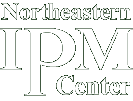Northeast Priorities
The Northeastern IPM Center engages a broad range of people and institutions to set priorities for IPM research, extension, and education projects and then to collaborate on work that will address these priorities through our Partnership Grant Program.
With input from our Advisory Council and experienced working group chairs, we developed a set of Priority-Setting Guidelines (PDF).
Projects funded by the Northeastern IPM Center should address or identify IPM priorities for the Northeast and contribute to the adoption and/or development of IPM in one or more of our Signature Programs:
- IPM and Organic Systems
- Pest Management in Changing Environments
- Pollinators
- Community IPM
- Next Generation Education
- Advanced Technology for IPM
Latest Priorities
Fruit
- Grapes and Wine (PDF) – National Grape and Wine Initiative (2012)
- Small Fruit (PDF) – Vegetable and Small Fruit IPM Working Group (2018)
- Tree Fruit (PDF) – Tree Fruit IPM Working Group (2023)
Vegetables
- Beets (PDF) – New York Vegetable Research Association and Council (2021)
- Cabbage (PDF) – NYS Cabbage Research and Development Program Board of Directors (2013)
- Carrots (PDF) – New York Vegetable Research Association and Council (2021)
- Cross-Commodity (PDF) – New York Vegetable Research Association and Council (2021)
- Dry Beans (PDF) – New York Dry Bean Advisory Meeting (2017)
- Onions (PDF) – New York State Onion Industry Council (2012)
- Peas (PDF) – New York Vegetable Research Association and Council (2021)
- Snap Beans and Lima Beans (PDF) – New York Vegetable Research Association and Council (2021)
- Sweet Corn (PDF) – New York Vegetable Research Association and Council (2021)
- Vegetables (PDF) – Vegetable IPM Working Group (2022)
Insects
- Brown Marmorated Stink Bug (PDF) – Brown Marmorated Stink Bug IPM Working Group (2016)
- Pollinators (PDF) – Northeast Pollinator IPM Working Group (2012)
- Spotted Wing Drosophila (PDF) – Spotted Wing Drosophila IPM Working Group (2018)
Community and Structural
- Municipal Rodent IPM Research Priorities (PDF) – Municipal Rodent Working Group (2023)
- School IPM (PDF) – School IPM Working Group (2019–2020)
- Urban IPM (PDF) – SCOPE 2020 Working Group (2017)
General IPM
- National Road Map for IPM (PDF) – USDA’s Office of Pest Management Policy (2018)
- NEERA-1604 Extension, Research, and Regulatory Priorities (PDF) – Northeast Region Technical Committee on IPM (2018)
Older priorities are available on our Priority Archives page. If you know of other lists that should be on this page, contact the Northeastern IPM Center.
